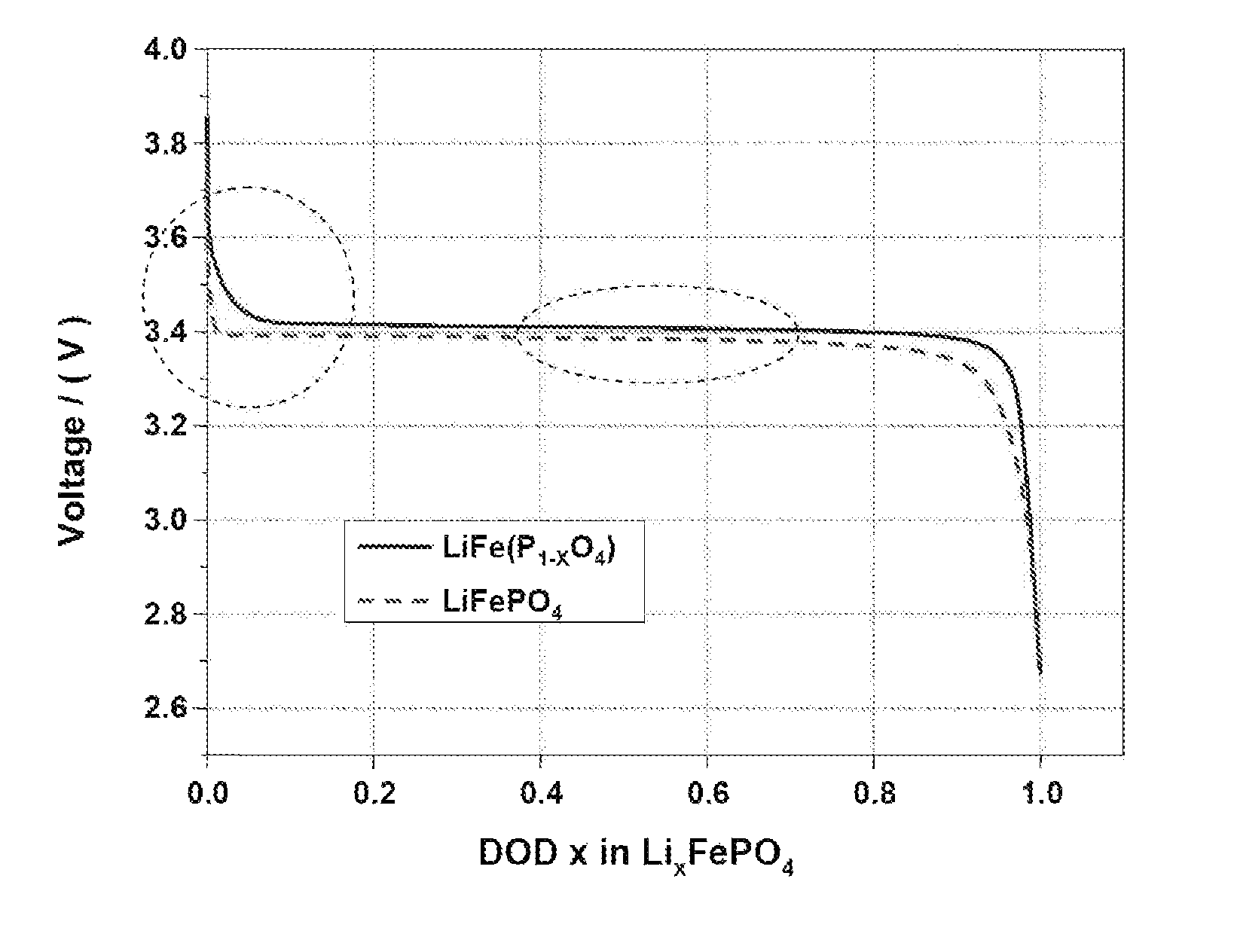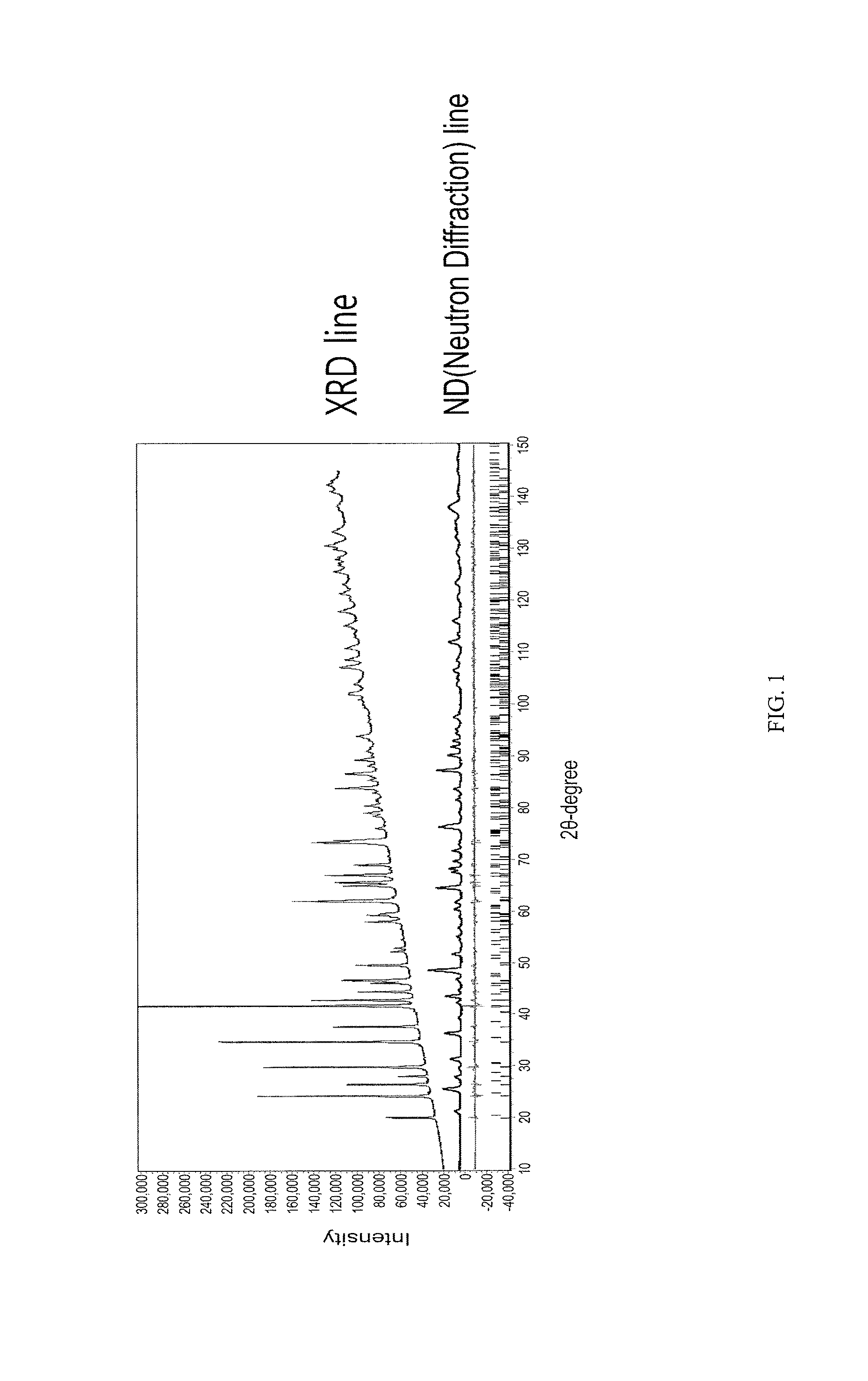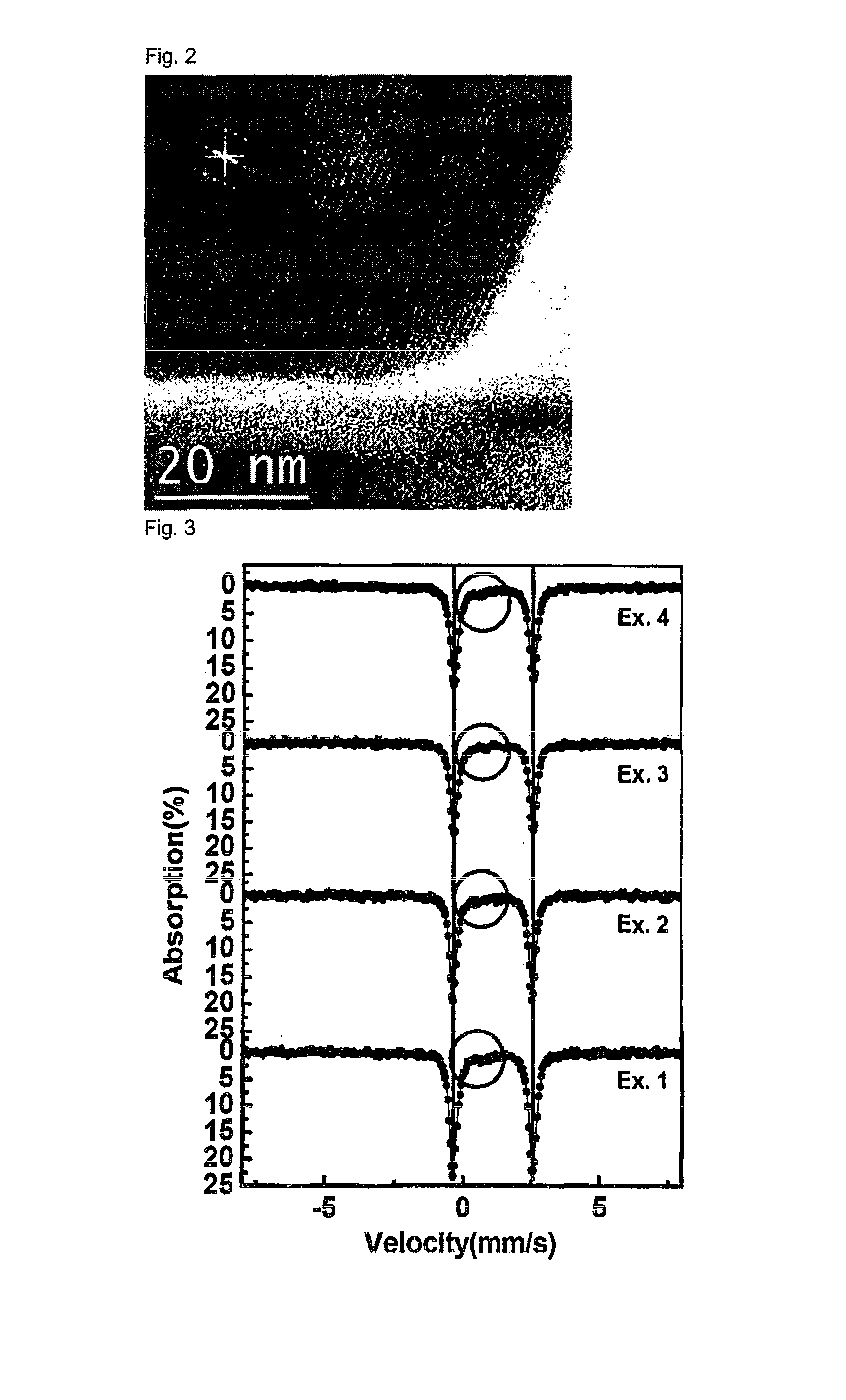Cathode mix having improved efficiency and energy density of electrode
a cathode mix and energy density technology, applied in the direction of cell components, secondary cell maintenance/maintenance, maintenance/maintenance of primary cells, etc., can solve the problems of low stability and high cost, unsuitable for mass-production at a reasonable cost, and reduce the efficiency of anodes. , the effect of reducing the efficiency of anodes
- Summary
- Abstract
- Description
- Claims
- Application Information
AI Technical Summary
Benefits of technology
Problems solved by technology
Method used
Image
Examples
examples
[0053]Now, the present invention will be described in more detail with reference to the following examples. These examples are provided only for illustrating the present invention and should not be construed as limiting the scope and spirit of the present invention.
preparation examples 1-4
[0054]Cathode active materials (LiFeP1-xO4) wherein the content of phosphorus (P) is 0.94 (Preparation Example 1), 0.96 (Preparation Example 2), 0.97 (Preparation Example 3) and 0.985 (Preparation Example 4) were prepared by a hydrothermal process, well-known as a LiFePO4 preparation method, in accordance with the following process. A more detailed description will be given below.
[0055]A solution of lithium hydroxide (LiOH—H2O) and iron sulfate (FeSO4-6H2O) as Li and Fe sources in distilled water and phosphoric acid (H3PO4) as a P source were placed in a reaction chamber. The molar ranges of these materials placed in the reaction chamber were as follows: FeSO4: 0.5 mol, LiOH—H2O: 0.5 mol-1.5 mol, H3PO4: 0.5 mol-0.6 mol.
[0056]The reaction was carried out in the reaction chamber at 380° C. for 15 sec. The reaction pressure was maintained at 270 bar using a pressure controller. When an excess of Li and P compounds are added in hydrothermal reactions generally having a slow reaction rat...
example 1
[0057]90% by weight of LiFeP0.94O4 prepared in Preparation Example 1, as the cathode active material, 5% by weight of Super-P as a conductive material and 5% by weight of PVdF as a binder were added to NMP (N-methyl-2-pyrrolidone) to prepare a cathode mixture slurry. The cathode mixture slurry was coated on one surface of an aluminum foil, followed by drying and pressing, to fabricate a cathode.
[0058]95% by weight of carbon as an anode active material, 1.5% by weight of Super-P as a conductive material and 3.5% by weight of PVdF as a binder were added to NMP as a solvent, to prepare an anode mix slurry. The anode mix slurry was coated on one surface of an aluminum foil, followed by drying and pressing, to fabricate an anode.
[0059]An electrode assembly was fabricated by laminating the cathode and the anode using Cellguard™ as a separator and a lithium non-aqueous electrolyte containing 1M LiPF6 in cyclic and linear carbonate mix solvent was added to the electrode assembly to fabricat...
PUM
| Property | Measurement | Unit |
|---|---|---|
| thickness | aaaaa | aaaaa |
| thickness | aaaaa | aaaaa |
| pore diameter | aaaaa | aaaaa |
Abstract
Description
Claims
Application Information
 Login to View More
Login to View More - R&D
- Intellectual Property
- Life Sciences
- Materials
- Tech Scout
- Unparalleled Data Quality
- Higher Quality Content
- 60% Fewer Hallucinations
Browse by: Latest US Patents, China's latest patents, Technical Efficacy Thesaurus, Application Domain, Technology Topic, Popular Technical Reports.
© 2025 PatSnap. All rights reserved.Legal|Privacy policy|Modern Slavery Act Transparency Statement|Sitemap|About US| Contact US: help@patsnap.com



